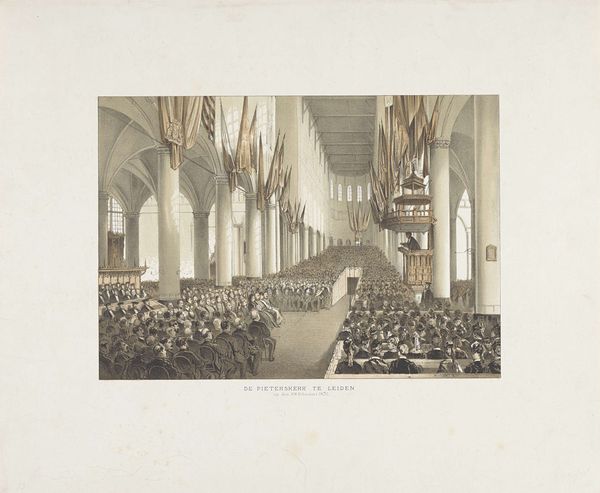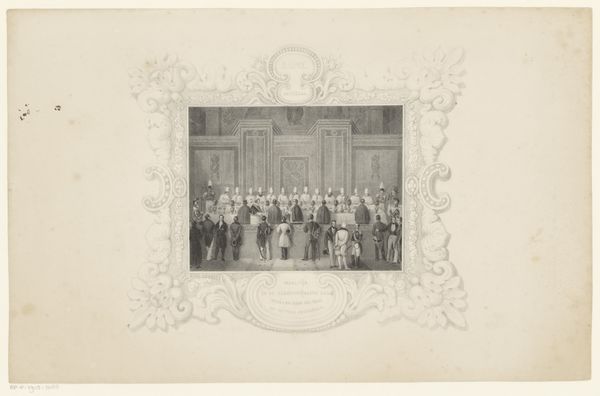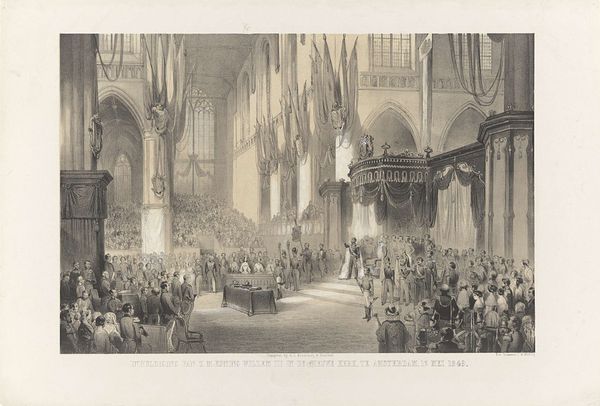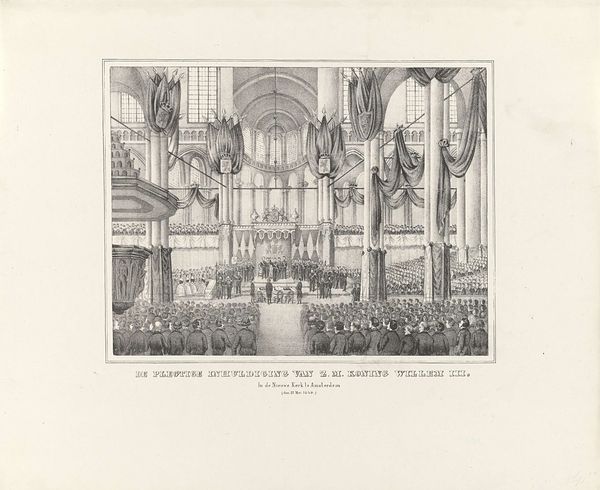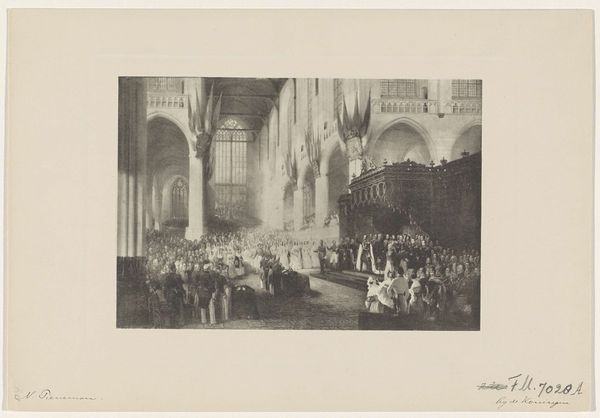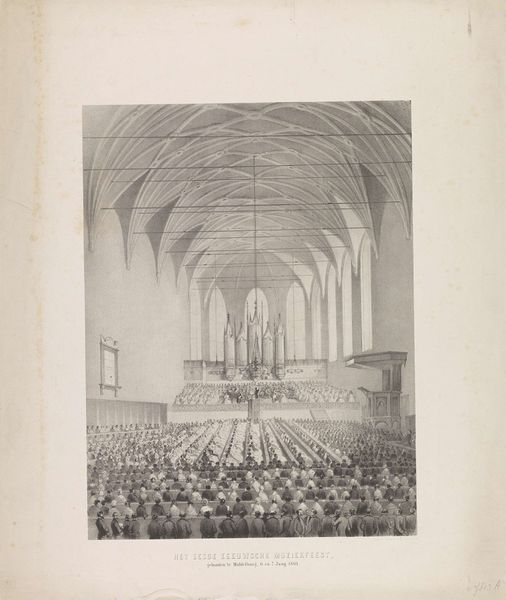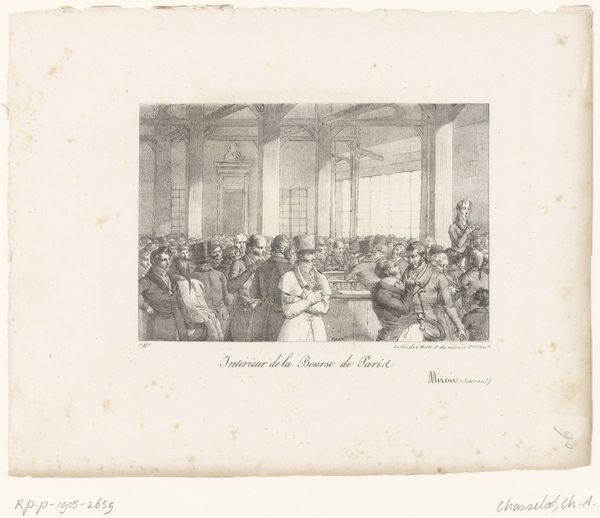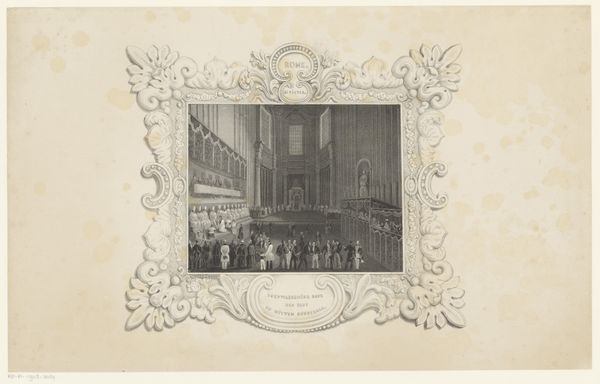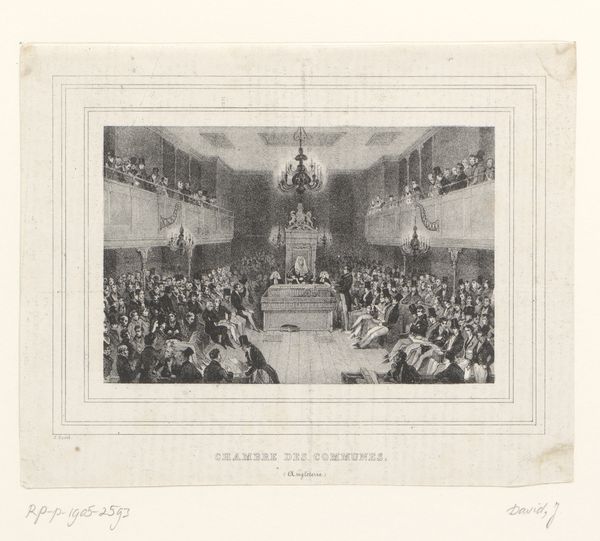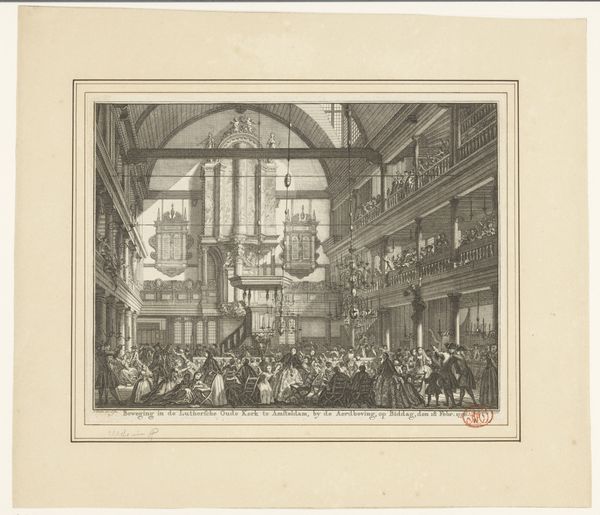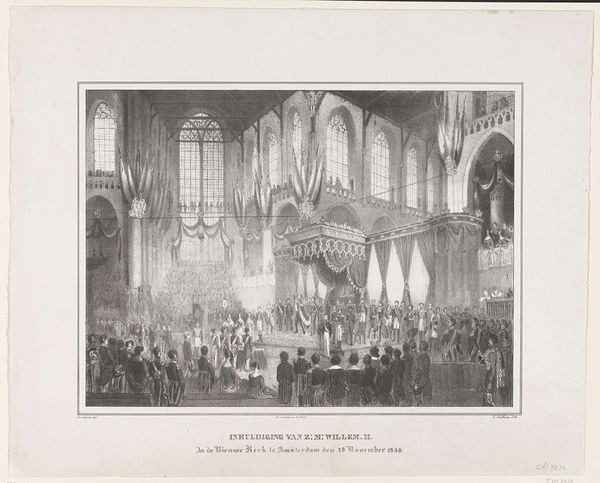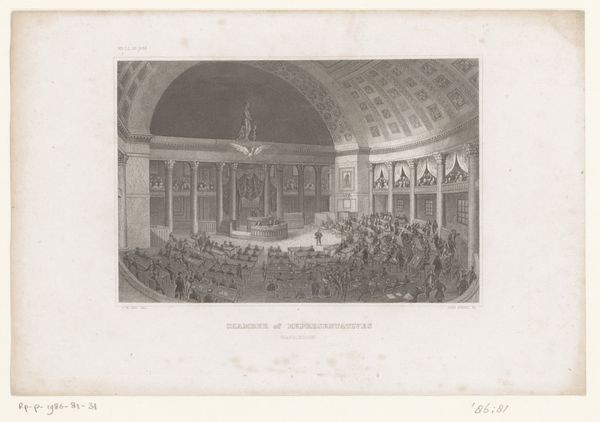
Het 4de Zeeuwsche Muzijkfeest in de Koor der groote Kerk te Goes, 4 Junij, 1857 1857
0:00
0:00
Dimensions: height 473 mm, width 620 mm
Copyright: Rijks Museum: Open Domain
Curator: This print captures "Het 4de Zeeuwsche Muzijkfeest in de Koor der groote Kerk te Goes, 4 Junij, 1857," by Pieter Wilhelmus van de Weijer. It’s currently housed at the Rijksmuseum. What's your immediate take? Editor: It feels…dwarfing. The crowd's packed in like sardines, and the church just swallows them. I feel a bit lost in the monochrome swarm. Curator: Note how van de Weijer used engraving to depict a specific social event, a music festival. This merges the high art aspirations of history painting with the immediacy of genre painting, accessible through mass-produced prints. Editor: Right, it’s almost like an early photograph. There's a sense of capturing a moment, not just composing an image. I wonder, did they sell these prints at the festival itself? Souvenir programs, basically? Curator: Quite possibly! The distribution network is key here. These engravings made cultural events like this accessible to a wider audience, democratizing the consumption of art and culture beyond the wealthy elite. Editor: And everyone dressed to the nines! It makes you think about the whole performance of attending an event like this back then, all the societal expectations baked in. Must have taken weeks to prepare an outfit, what kind of labor was involved! It would be kind of exhausting and exciting to experience a medieval church's acoustics and social energy. Curator: Precisely. It brings up the production process, not just the artistic execution but also the clothing industry supporting it. This period, the mid-19th century, was witnessing enormous shifts in textile production, making finery more accessible, albeit through often exploitative labor practices. The print acts as an index of its time. Editor: I’m still stuck on how this piece is "romantic," which this piece seemingly labeled as. Maybe it’s in the grand scale of the church, this yearning for something bigger, even spiritual? Curator: Romanticism often idealised historical and communal events, imbuing them with heightened emotions. While rendered in a realist style, this print elevates a local festival to a scene of national cultural importance, thus fitting within a Romantic framework. It is, however, important to recognise realism, though it can still retain Romantic qualities through sentimental or nostalgic rendering. Editor: Interesting. I leave with a feeling that historical document might unintentionally convey its own feeling by documenting culture at the time. Curator: Agreed. This print layers materiality, labor, cultural aspiration, and the performance of social status—a complex document of its age.
Comments
No comments
Be the first to comment and join the conversation on the ultimate creative platform.
